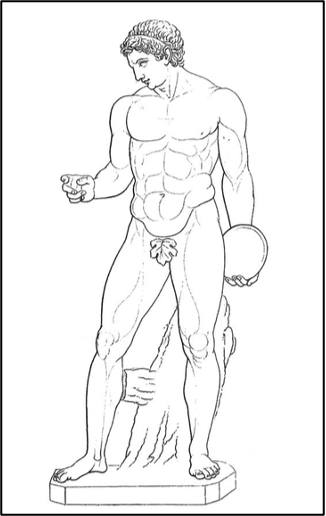
In understanding the societal constructs of masculinity, Mosse's (1996) exploration of modern masculinity provides a lens through which we can examine cultural ideals, evident in media representations such as the Ken doll.

Mosse (1996) is a significant figure in masculinity studies, exploring the political history and evolution of modern masculinity. He describes modern masculinity as a standardised mental image that embodies traditional 'manly' virtues like power and courage. He emphasises the importance of physical appearance in constructing this ideal, tracing its origins back to ancient Greece's depictions of male which were “lithe, without any surplus fat, and no feature of the body or face disturbed their noble proportions” (p.29). At the end of the Eighteenth Century this “became a symbol of society and nation” (Mosse, 1996, p.23). As such, the media represent men as thin yet muscular, as muscle always equals power, dominance, strength, sexual virility, and self-esteem (Baghurst et al., 2006).
Therefore, it is no surprise that Ken’s thin, yet muscular body fits exactly into this Mosse’s definition of “modern masculinity”. His body represents power and attractiveness in the eyes of western media. Fueled by societal norms emphasizing strong and lean male images, concerns regarding body image have become increasingly prevalent (Croll, 2005), prompting men to strive for increased muscle tone (Barlet et al., 2005). This in turn, may lead to the development of muscle dysmorphia and a desire for height, speed, breadth, and strength (Baghurst et al., 2006).
In response to longstanding criticisms regarding body image perpetuation of Mattel’s Ken dolls, they introduced changes to the Ken dolls in 2017 (Wu, 2020). These now offered three so-called body types: original, slim, and broad (Wu, 2020). This adjustment aimed to present Ken in a more relatable light, reflecting a diversity of body sizes found in everyday individuals (Wu, 2020). Ken's Diversity is further discussed in the next article of this tour "The Diversity of Ken Over Time".